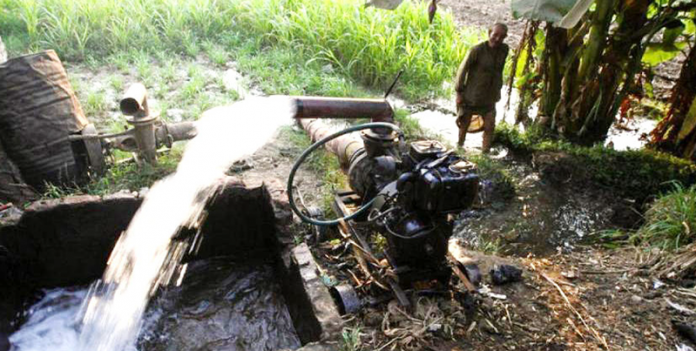CAIRO: When Eman Essa’s husband died and she took over running his farm in southern Egypt, she found herself guessing when the wheat crop needed watering.
Essa, 36, would often end up either using too much water on her 2-feddan (2-acre) plot outside Samalout city or hiring another farmer to take over the irrigation duties, she said.
Then, in December last year, the mother of four joined a new government project that uses sensors to allow her to see exactly when the soil is dry and just how much water she needs — all from an app on her phone.
“When I first heard about the new system, I did not know exactly how it would benefit me. But when people showed me how it works, I found it really helpful and (it) would save me a lot of effort and money,” she said in a phone interview.
In the few weeks since she adopted the system, Essa has been using 20 percent less water and her labor costs have dropped by nearly a third.
The system, developed by the Ministry of Water Resources and Irrigation and Cairo’s MSA University, uses a sensor buried in the soil to measure moisture levels and a transmitter to send the data to the user, who accesses it through a mobile app.
Even if they are away from their fields, farmers can tell whether their crops need more water or have had enough.
Essa is one of the dozens of farmers who have started using the new system, launched in December, in Upper Egypt’s Minya governorate and in New Valley governorate in the southwest.
The project, in its pilot phase, is part of a nationwide strategy to encourage the use of modern irrigation methods, said Mohamed Ghanem, spokesman for the Water Ministry. The aim is to reduce water use, increase crop productivity and lower production costs as Egypt faces increasing water pressures, he said.
“The preliminary results indicate success in saving large quantities of water and reducing production costs,” he said by phone, adding that the government is still in the process of collecting data on the project’s impact.
The ministry has so far provided 200 free devices to farmers, but after the trial period ends, it will start selling them countrywide, Ghanem added, without specifying the price.
At another farm near Essa’s in Minya governorate, Gerges Shoukri said combining the new mobile system with the drip irrigation he and his wife installed early last year had been a big boost.
Shoukri, 32, said he now uses 15 percent less water, while the quality of his vegetable crops has improved and production has jumped by about 30 percent. “We have to be prepared in case of any water shortages by adopting new irrigation and agricultural methods,” he said.
A 2019 report by the Egyptian Center for Strategic Studies noted that every year agriculture consumes more than 85 percent of the country’s share of the Nile, which provides the bulk of Egypt’s water supply.
Officials say Egypt currently has about 570 cubic meters (150,000 gallons) of water per person per year. Experts consider a country “water poor” if its annual supply is less than 1,000 cubic meters per person.
In 2017, Egypt embarked on a 20-year strategy to tackle its water challenges, which experts say are becoming increasingly urgent in the face of a growing population, climate change-related drought and fears of losing much of its access to the Nile River’s waters.

Egypt’s headline inflation falls to 4.3% in JanuaryEgyptian exports to GCC increase 25.7%

